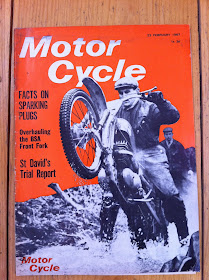Barbour has got an incredibly long and loving history with waxed cotton, and it could be argued that our relationship with this material for use in clothing is the longest running and most consistent in the world today.
Back in 1894 when John Barbour founded J. Barbour & Sons, South Shields was a busy port in the North East of England. As such there was a big demand from Barbour for clothing that would keep all the sailors, fishermen, river, dock and shipyard workers dry. At the time, Barbour produced a range of clothing called the Beacon Brand and the term Oilskin was used to describe this thick waterproof fabric. But contrary to popular belief, we didn’t actually invent Oilskins and the process of waterproofing fabric with oils and waxes predates even the original founder of Barbour himself.
The process of impregnating fabric to make it waterproof is traced back to the 15th century. Mariners used to oil and grease their heavy sailcloth and create makeshift waterproof capes when out at sea to keep the winds and driving rain at bay. By 1795 the Scottish sailmaker Francis Webster Ltd made a form of oiled flax sails, and these were used by the fleet of British Clippers at that time. A by-product when flax was made was a small seed called linseed. It was found that when these seeds were ground up to a paste, the linseed oil could be used to coat the flax sailcloth to make it waterproof. This method produced a fabric which resembles the wax cotton material that we are familiar with today.
But the weight of these heavy flax sails became an issue for the ship designers because the Clippers needed to be faster and lighter in order to gain an advantage over their rivals. It was then discovered that cotton became a perfect alternative to flax, and waxed cotton sails were introduced. The recipe for producing this waterproof cotton remained pretty much unchanged from the mid 19th century right through to the 1930’s and the very first Beacon Brand Oilskins that we produced back in 1894 were based on this traditional flax seed recipe.
But there were problems with the original Oilskins, including the fabric becoming rigid and stiff in very cold weather, and also turning a shade of yellow, and therefore in the 1930’s a new generation of proofed cottons was developed. But this wasn’t easy. It was a complicated process and the finished material involved a lot of cooperation between three different companies and two years of development to perfect the process. But it paid off. The new cotton was designed to be used exclusively for outerwear and as such was perfect for the job at hand.
In the post-war years, the uses of waxed cotton multiplied and as a result the Barbour International motorcycle suit was born. The distinctive International Suit with its slanted map pocket was a favourite among trials riders and was worn the world over. During the 1964 International Six Days Trial, Steve McQueen and the rest of the American team all wore our International Suits and our suits were worn by virtually every British International team from 1936 to 1977, when we made the decision to pull out of the motorcycle clothing market.
There have been improvements and changes in the production and manufacturing of waxed fabrics since the 1930’s and the material has been refined over the decades to become the unique wax cotton that Barbour is famous for today. But there are in fact several different types of waxed cotton that we use, and there are quite big differences in look, touch and performance between each one.
Sylkoil
Our oldest and more traditional wax cotton is called Sylkoil. This is an “unshorn” wax where the cotton comes straight from the loom while it’s slightly fluffy and is then dyed and waxed. The natural imperfections of the weave are reflected in the rich variations of colour and finish and over time, this fabric softens into a lovely slightly peachy looking cotton between waxes. It is available in 3 different weights: 4oz, 6oz and 8oz.
Milledwax
Milledwax is a luxurious brushed wax which is passed slowly and carefully over emery rollers to provide a fine, soft suede-like finish. It is available in a heavyweight 8oz fabric.
Thornproof
Thornproof wax is a lustrous wax with a deep colour and even touch. The cotton is calendered between rollers and then dyed. The resulting finish is smooth cotton which we term Thornproof because it is extremely resistant to snags and pulls from spiky plants such as brambles and hawthorn. Our Thornproof wax is available in 6oz.
Antique Wax
Antique wax is heavily calendered which results in a lustrous glossy finish that changes with wear and relaxes with age. It is currently available in a light weight 4oz cotton which is ideal for the cooler months.
Weathered Wax
Weathered wax, sometimes referred to as Cracked Wax, is an aged finish wax used predominantly in vintage garments to give a characteristic weathered appearance. It is available in heavier weight 8oz cotton.


















































